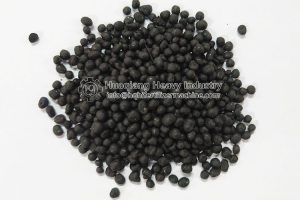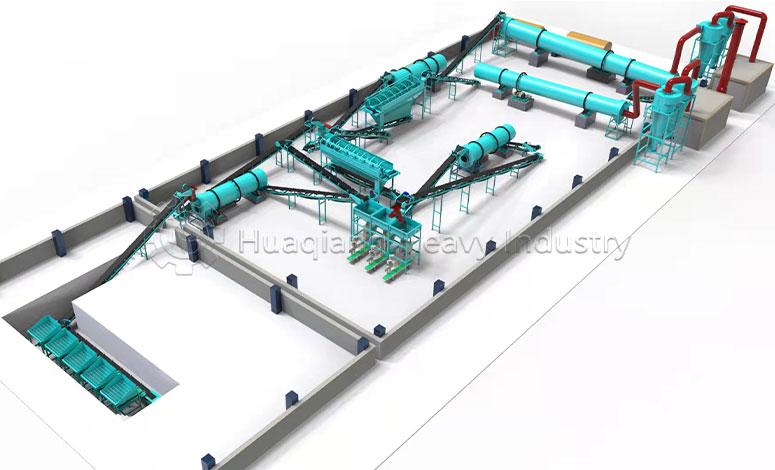In the pursuit of sustainable development, converting industrial waste into organic fertilizer has become an innovative solution that addresses both environmental pollution and agricultural needs. Paper mill black liquor, pulp residue, and cottonseed hulls from textile industry – can these industrial byproducts truly become valuable organic fertilizer ingredients? Let’s explore the transformation process.
The conversion of industrial waste into organic fertilizer presents an innovative solution addressing both environmental pollution and agricultural needs. This process aligns closely with the organic fertilizer production process, utilizing similar composting and fermentation techniques to transform waste into nutrient-rich amendments. The bio fertilizer manufacturing process further enhances this by introducing beneficial microorganisms during production, creating products that not only nourish plants but also improve soil biology. Together, these processes demonstrate how industrial byproducts can be valorized through biological treatment methods, closing the nutrient loop while reducing landfill dependence and chemical fertilizer use.
Potential of Industrial Waste as Organic Fertilizer

Industrial waste from paper and textile industries contains abundant organic matter and nutrients suitable for fertilizer production:
| Waste Material | Key Components | Fertilizer Potential |
| Paper mill black liquor | Lignin, hemicellulose, organic acids | High organic content, needs pH adjustment |
| Pulp residue | Cellulose fibers, small wood particles | Good carbon source, requires decomposition |
| Cottonseed hulls | Cellulose (over 90%), some proteins | Excellent carbon source, needs size reduction |
Essential Pretreatment Processes
Before these materials can be used in organic fertilizer production, they must undergo specific pretreatments:
For paper mill black liquor:
- pH adjustment to 6.5-8.0 using alkaline or acidic additives
- Solid-liquid separation to remove excess water
- Heavy metal testing and removal if necessary
For pulp residue and cottonseed hulls:
- Crushing or grinding to achieve particle size below 10mm
- Mixing with nitrogen-rich materials to achieve proper C/N ratio (25-30:1)
- Moisture adjustment to 50-60% for composting
Required Equipment for Pretreatment
The transformation process requires specialized machinery:
| Process Stage | Equipment | Function |
| Size reduction | Crusher, grinder | Reduce particle size for better decomposition |
| pH adjustment | Mixing tank with agitator | Neutralize black liquor to suitable pH |
| Mixing | Horizontal mixer | Blend materials uniformly |
| Composting | Turner machine | Aerate and mix compost piles |
Quality Standards for Organic Fertilizer
The final product must meet specific standards to be classified as organic fertilizer:
- Organic matter content ≥ 30%
- Moisture content ≤ 30%
- pH value between 5.5-8.5
- Heavy metal content below maximum allowable limits
- Pathogen-free (E. coli, salmonella, etc.)
- Stable decomposition without phytotoxic substances
Special Requirements for Production Lines
When using these industrial wastes as raw materials, organic fertilizer production lines need additional considerations:
- Corrosion resistance:Black liquor’s initial acidity requires acid-resistant materials for equipment.
- Enhanced crushing system:Fibrous materials like cottonseed hulls need powerful crushers.
- Extended composting period:Lignin-rich materials may require longer fermentation time (40-60 days).
- Additional safety measures:Proper ventilation and protective equipment for workers handling industrial waste.
Key Considerations for Manufacturers
Manufacturers venturing into this field should pay attention to:
- Conduct thorough raw material testing for contaminants
- Implement strict quality control throughout the process
- Obtain necessary environmental permits and certifications
- Ensure proper worker training and safety protocols
- Develop marketing strategies highlighting the sustainable aspect
- Consider partnerships with waste-producing industries
By properly processing these industrial byproducts, manufacturers can create high-quality organic fertilizers while contributing to circular economy and environmental protection. The key lies in understanding the unique characteristics of each waste material and implementing appropriate pretreatment and production processes.
Note: Standards mentioned in this article refer to general organic fertilizer guidelines. Specific requirements may vary by country and region. Manufacturers should consult local regulations before production.




